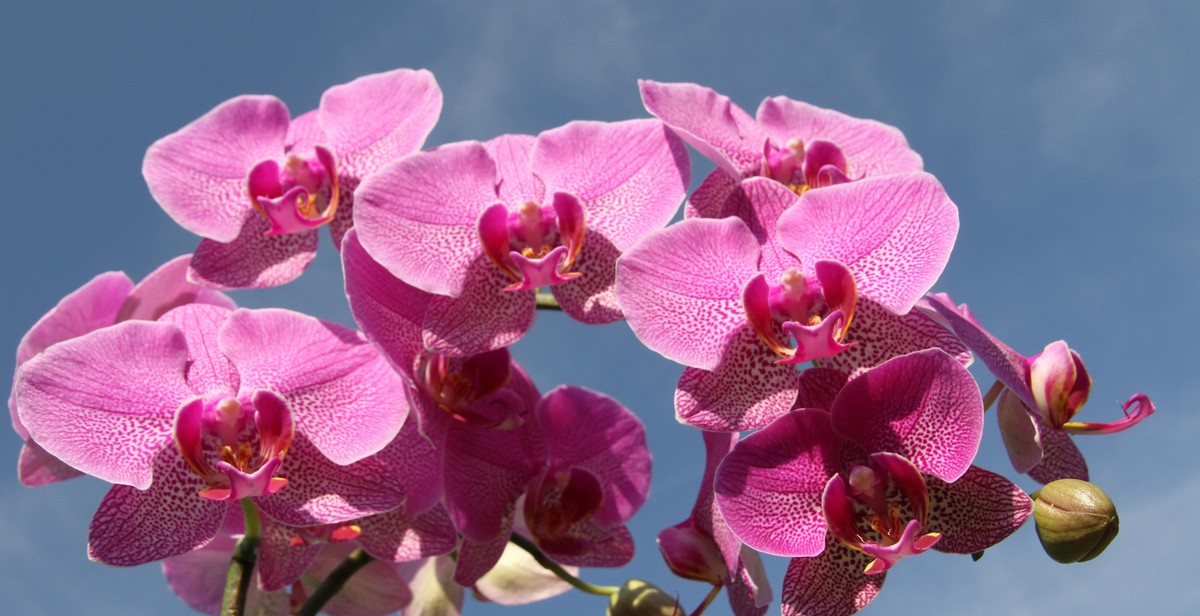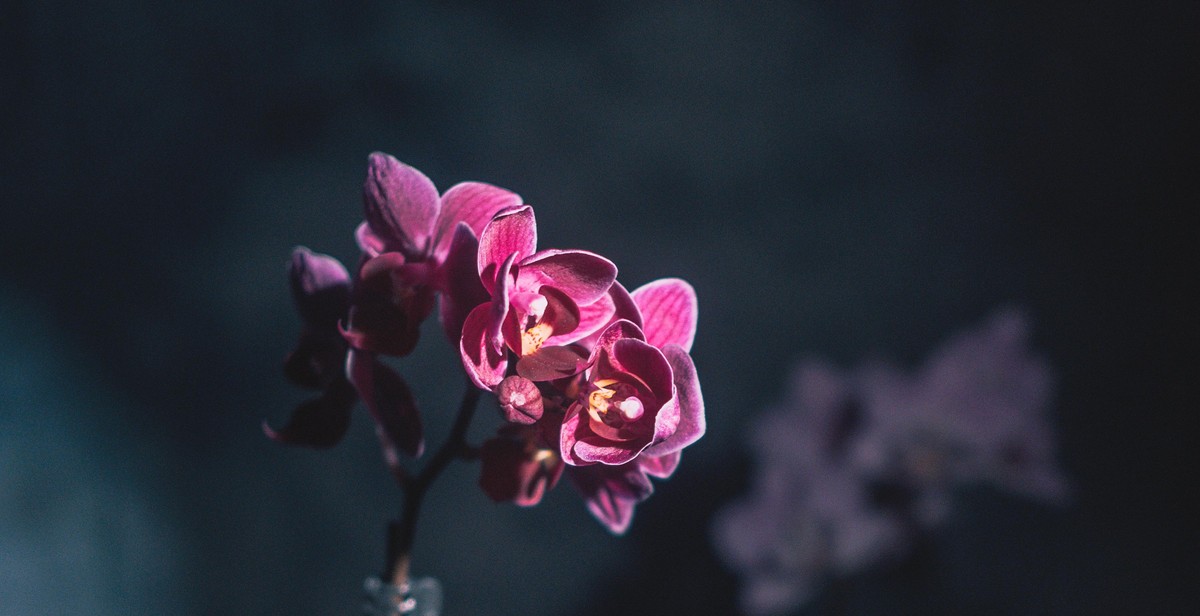How to Grow Beautiful Orchids at Home
Orchids are one of the most beautiful and diverse families of flowers, with over 25,000 species and more than 100,000 hybrids. They are also great houseplants, adding elegance and color to any room. Growing orchids at home is easier than you might think, and the benefits are numerous.
Why Orchids are Great Houseplants
Orchids are popular houseplants for several reasons. First, they are low-maintenance and require minimal watering and care. Second, they come in a wide variety of colors, shapes, and sizes, making them an excellent choice for any decor. Third, they are long-lasting, with some orchids blooming for several months at a time.
Benefits of Growing Orchids at Home
Growing orchids at home has several benefits beyond their aesthetic appeal. Orchids are natural air purifiers, removing pollutants such as formaldehyde, benzene, and xylene from the air. They also increase humidity levels, which can benefit your skin, hair, and respiratory system. Additionally, caring for orchids can be a relaxing and therapeutic hobby, reducing stress and anxiety.
If you’re ready to grow beautiful orchids at home, this comprehensive guide will provide you with all the information you need to get started.

Choosing the Right Orchid
Orchids are a popular choice for indoor plants due to their vibrant colors and unique shapes. However, with over 25,000 species of orchids available, it can be overwhelming to choose the right one for your home. Here are some considerations to keep in mind when choosing the right orchid:
Understanding the Different Types of Orchids
Before choosing an orchid, it is important to understand the different types of orchids available. The two main categories of orchids are terrestrial and epiphytic. Terrestrial orchids grow in soil, while epiphytic orchids grow on other plants or trees.
Epiphytic orchids are the most popular choice for indoor plants as they do not require soil and can be grown in a variety of containers. Some popular types of epiphytic orchids include:
- Phalaenopsis
- Cattleya
- Dendrobium
- Oncidium
Terrestrial orchids can also be grown indoors but require specific soil conditions and may not thrive as well as epiphytic orchids. Examples of terrestrial orchids include:
- Paphiopedilum
- Cymbidium
- Miltonia
Considerations for Choosing the Right Orchid for Your Home
When choosing an orchid for your home, consider the following:
- Light: Orchids require bright, indirect light to thrive. Consider the amount of natural light in your home and choose an orchid that matches those requirements.
- Temperature: Orchids prefer temperatures between 60-80°F. Ensure that your home’s temperature matches the orchid’s requirements.
- Humidity: Orchids require high humidity to thrive. Consider using a humidifier or placing a tray of water near the orchid to increase humidity levels.
- Watering: Orchids should be watered once a week or when the soil is dry to the touch. Be careful not to overwater as this can lead to root rot.
- Potting: Choose a pot with good drainage and use orchid-specific potting mix to ensure proper drainage and aeration.
By considering these factors and understanding the different types of orchids available, you can choose the right orchid for your home and successfully grow a beautiful indoor plant.

Creating the Ideal Environment for Your Orchid
Orchids are delicate plants that require specific environmental conditions to thrive. Here are some tips on how to create the perfect environment for your orchid:
Lighting Requirements
One of the most important factors in growing orchids is providing the right amount of light. Most orchids require bright, indirect light to grow properly. Direct sunlight can be too harsh and can burn the leaves of the plant. If you’re growing your orchid indoors, place it near a window that gets plenty of natural light, but avoid placing it in direct sunlight. If you’re growing your orchid outdoors, make sure it’s in a shaded area.
Temperature and Humidity Requirements
Orchids thrive in warm, humid environments. The ideal temperature range for most orchids is between 60-80°F (15-27°C). It’s important to keep your orchid away from cold drafts and sudden changes in temperature. Humidity is also crucial for orchids. Aim for a humidity level of around 50-70%. If you live in a dry climate, you may need to use a humidifier to create the ideal environment for your orchid.
Potting and Soil Requirements
Choosing the right pot and soil for your orchid is also important. Orchids prefer to be in a well-draining potting mix that allows for air circulation around the roots. Avoid using regular potting soil, as it can hold too much moisture and suffocate the roots. Instead, choose a potting mix specifically designed for orchids. When selecting a pot, choose one that is just slightly larger than the root ball of your orchid. This will prevent the soil from retaining too much moisture and will help prevent root rot.
| Factor | Ideal Range |
|---|---|
| Light | Bright, indirect light |
| Temperature | 60-80°F (15-27°C) |
| Humidity | 50-70% |
| Potting Mix | Well-draining mix designed for orchids |
| Pot Size | Slightly larger than root ball |
By providing the right lighting, temperature, humidity, potting mix, and pot size, you can create the ideal environment for your orchid to thrive. With a little bit of care and attention, you can enjoy beautiful blooms from your orchid for years to come.

Watering and Fertilizing Your Orchid
Watering and fertilizing are two essential practices for growing beautiful orchids at home. Orchids are delicate plants that require a specific routine to thrive and bloom. In this section, we will discuss the best watering and fertilizing techniques for your orchids.
Watering Frequency and Techniques
The frequency of watering your orchids depends on several factors such as the type of orchid, pot size, humidity, and temperature. Generally, orchids need to be watered once a week in moderate temperatures and twice a week during hot and dry weather. It is crucial to avoid overwatering your orchids as it can lead to root rot and other diseases.
One of the best techniques for watering orchids is the soak-and-dry method. This involves immersing the orchid pot in a container of water for about 10-15 minutes, allowing the roots to absorb the water. Afterward, remove the pot and let it drain completely before returning it to its usual spot. This method ensures that the roots get enough water without being overwatered.
Fertilizing Frequency and Techniques
Fertilizing your orchids is essential for providing them with the necessary nutrients for growth and flowering. However, it is important to note that orchids require a specific type of fertilizer that is low in nitrogen and high in phosphorus and potassium. The ideal fertilizer for orchids is a balanced 20-20-20 fertilizer that contains micronutrients.
The frequency of fertilizing your orchids depends on the type of fertilizer you are using. Generally, orchids should be fertilized once a month during the growing season, which is usually from spring to fall. However, during the dormant season, which is usually in winter, fertilizing should be reduced or stopped altogether.
One of the best techniques for fertilizing orchids is to dilute the fertilizer in water and apply it directly to the roots. Avoid getting the fertilizer on the leaves or flowers as it can burn them. Additionally, it is crucial to flush the pot with water every few months to remove any excess fertilizer buildup that can harm the roots.
| Technique | Frequency |
|---|---|
| Soak-and-dry method | Once a week in moderate temperatures, twice a week during hot and dry weather |
| Diluted fertilizer application | Once a month during the growing season, reduce or stop during the dormant season |
By following these watering and fertilizing techniques, you can ensure that your orchids grow healthy and beautiful. Remember to monitor your orchids regularly and adjust your routine according to their specific needs.

Common Issues and How to Solve Them
Pests and Diseases
Orchids are prone to pests and diseases, which can hinder their growth and beauty. Here are some common pests and diseases that affect orchids and how to solve them:
| Pests/Diseases | Symptoms | Solutions |
|---|---|---|
| Spider mites | Webbing on leaves and flowers, yellowing leaves | Use insecticidal soap or neem oil to control infestation |
| Mealybugs | White, cottony masses on leaves and flowers | Wipe off with alcohol-soaked cotton swabs or use insecticidal soap |
| Scale insects | Brown or black bumps on leaves and stems | Remove with a cotton swab dipped in alcohol or use insecticidal soap |
| Root rot | Wilting leaves, mushy roots | Repot in fresh, well-draining potting mix and reduce watering |
Common Growth Problems and Solutions
Orchids may also experience growth problems, which can affect their overall health and appearance. Here are some common growth problems and solutions:
- Yellowing leaves: This can be a sign of overwatering or underwatering. Adjust watering schedule accordingly.
- Lack of blooms: Orchids need the right amount of light and temperature to bloom. Make sure they are getting enough light and are not exposed to extreme temperatures.
- Stunted growth: This can be caused by a lack of nutrients or overcrowding in the pot. Fertilize regularly and repot in a larger pot if necessary.
- Brown spots on leaves: This can be a sign of sunburn or bacterial/fungal infection. Move the orchid to a shadier spot or treat with fungicide.
By identifying and addressing these common issues, you can ensure that your orchids grow and thrive in your home.
